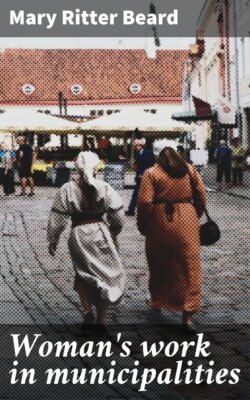Читать книгу Woman's work in municipalities - Mary Ritter Beard - Страница 15
Occupational Diseases
ОглавлениеIn addition to the communicable diseases there are occupational diseases some of which, like tuberculosis, are communicable, while others are not.
Women were behind the agitation for the abolition of poisonous matches—matches which produced sulphur poisoning for those who made them. In the official organ of the Federation of Clubs was found zealous advocacy of the Esch-Hughes law until its passage.
Occupational diseases are ills which are quite distinct in causation from fevers and other epidemics due to germs. Relatively little has been done in the United States toward the study and prevention of such diseases, however, and the recent quickening of consciences and interest in that direction is true of women as well as of men. The reports of Dr. Alice Hamilton on lead-poisoning and of Mrs. Lindon Bates on mercury poisoning are excellent contributions to the subject and are among the rare studies of occupational hygiene in this country.
The widespread interest in industrial accidents may well extend to the more subtle industrial diseases which may not be as sensational as cataclysmic events but are not the less sure in their depletion of vigor and in the hardships they bring into the lives of the workers and thousands of families. The activity of the Women’s Municipal League of Boston affords us an example of the way in which women are awakening to their own and the public responsibility for such occupational diseases. In their study of these dread enemies of working people, they have begun with lead-poisoning and, perhaps wisely, since painters come into their homes and they themselves often share directly in the responsibility for the infection through their failure to provide hot water and other cleansing materials at the close of the painter’s day of work. This League has become interested in the physical troubles of telephone operators also, such as the loss of voice and hearing.
